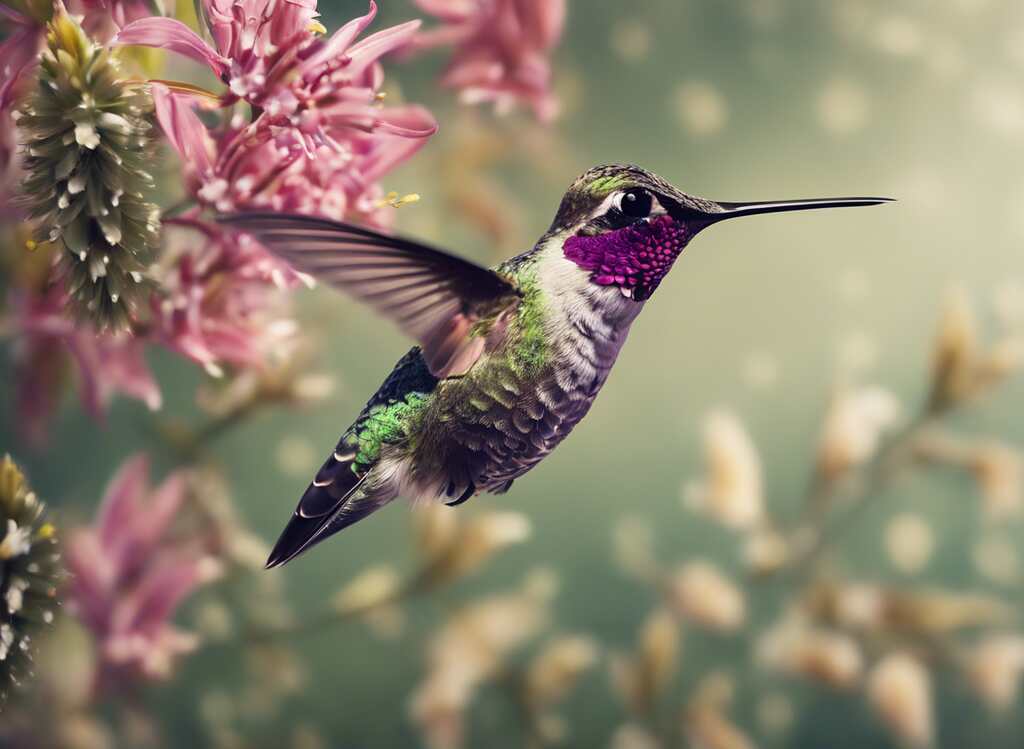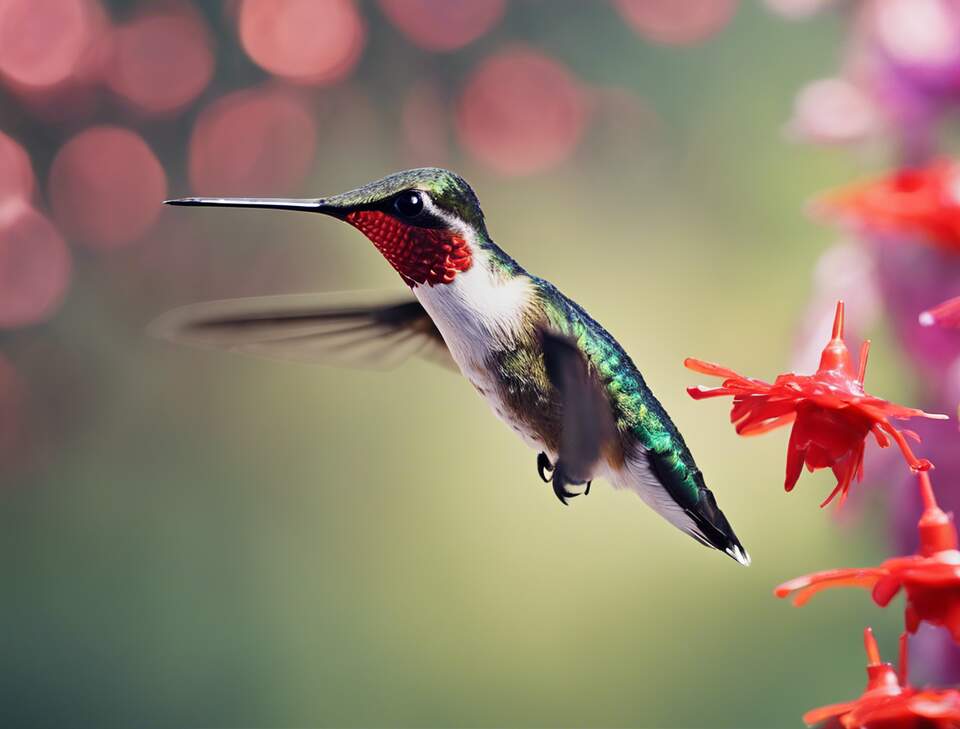Hummingbirds, those incredible avian wonders, captivate us with their mesmerizing aerial displays and remarkable resilience. These tiny creatures, often referred to as “flying jewels,” possess a fascinating lifespan that defies their diminutive size. In this exploration, we’ll explore the remarkable longevity of hummingbirds and uncover the secrets behind their remarkable lifespan.
Table of Contents
- 1 The Fascinating Lifespan of Hummingbirds
- 2 Longest Living Hummingbirds
- 3 Factors Influencing Hummingbird Longevity
- 3.1 Unraveling the Secrets of Hummingbird Longevity
- 3.2 The Importance of Habitat and Environmental Factors
- 3.3 Dietary Considerations and Nutritional Needs
- 3.4 Predation and Adaptive Strategies
- 3.5 Behavioral Adaptations and Physiological Traits
- 3.6 The Impact of Human Intervention and Conservation Efforts
- 4 Conclusion
- 5 References
- 6 Author
The Fascinating Lifespan of Hummingbirds
Hummingbirds: Nature’s Tiniest Marvels
Hummingbirds are the smallest birds on the planet, with some species weighing as little as 2 grams, roughly the same as a penny. Despite their diminutive stature, these feathered marvels possess a remarkable vitality, capable of flapping their wings up to 80 times per second and reaching impressive speeds of over 50 miles per hour. This incredible agility and energy efficiency are just the tip of the iceberg when it comes to the remarkable attributes of hummingbirds.
The Longevity of Hummingbirds
One of the most fascinating aspects of hummingbirds is their impressive lifespan, especially considering their tiny size. On average, hummingbirds can live for 3 to 5 years in the wild, with some exceptional individuals reaching up to 12 years of age. This longevity is a testament to the species’ resilience and adaptability, as they must navigate a challenging environment filled with predators and fluctuating food sources.
Lifespan ranges for popular hummingbird species:
| Hummingbird Species | Lifespan Range (years) |
|---|---|
| Allen’s Hummingbird | 4 – 7 |
| Anna’s Hummingbird | 4 – 8* |
| Black-chinned Hummingbird | 4 – 11* |
| Blue-throated Mountain-gem | 4 – 8 |
| Broad-billed Hummingbird | 4 – 9 |
| Broad-tailed Hummingbird | 4 – 12* |
| Buff-bellied Hummingbird | 4 – 11* |
| Calliope Hummingbird | 4 – 8 |
| Costa’s Hummingbird | 4 – 9 |
| Lucifer Hummingbird | 4 – 7 |
| Rivoli’s Hummingbird | 4 – 11* |
| Ruby-throated Hummingbird | 4 – 9 |
| Rufous Hummingbird | 4 – 9 |
Asterisks (*) indicate species with documented lifespans exceeding 10 years.
Longest Living Hummingbirds
The longest living hummingbird on record is a Broad-tailed Hummingbird that lived for at least 12 years. This remarkable lifespan was documented in Colorado, USA, where the bird was first banded in 1976 and recaptured in 1988.
Another notable case is a Black-chinned Hummingbird that lived for at least 10 years and 2 months. This individual was banded in Arizona, USA in 1991 and recaptured in 2001, making it one of the oldest recorded hummingbirds of its species.
The Rufous Hummingbird also holds a longevity record, with one individual living for at least 8 years and 11 months. This tiny bird was banded in Washington, USA in 1976 and recaptured in 1985, showcasing the incredible lifespan potential of these miniature marvels.
While hummingbirds are known for their rapid metabolism and high energy demands, these exceptional cases demonstrate that some individuals can defy the odds and achieve remarkable longevity in the wild.
Factors Influencing Hummingbird Lifespan
Several factors contribute to the remarkable longevity of hummingbirds. Firstly, their rapid metabolism and efficient energy utilization allow them to thrive in the face of the constant demands of their lifestyle. Hummingbirds must consume nectar and small insects almost continuously to maintain their high-energy needs, and their ability to efficiently process this food is a key factor in their longevity.
Additionally, hummingbirds possess a unique immune system that helps them ward off diseases and parasites, further enhancing their chances of survival. Their small size also provides a level of protection from larger predators, although they still face threats from smaller predators, like snakes and large insects.
The Role of Habitat and Climate
The habitat and climate in which hummingbirds live also play a significant role in their lifespan. Hummingbirds that inhabit regions with milder, more stable climates tend to have longer lifespans compared to those in areas with more extreme weather conditions. This is because a more favorable environment allows hummingbirds to dedicate more resources to maintaining their health and longevity, rather than constantly adapting to harsh environmental stresses.
Adaptations for Longevity
Hummingbirds have evolved a range of adaptations that contribute to their impressive lifespan. For instance, they have a remarkable ability to enter a state of torpor, a form of temporary hibernation, during periods of food scarcity or inclement weather. This helps them conserve energy and minimize the impact of resource shortages, increasing their chances of survival.
Additionally, hummingbirds’ rapid metabolism and efficient digestive system allow them to extract the maximum amount of energy from the nectar and small insects they consume. This, combined with their high-speed flight and excellent maneuverability, enables them to thrive in their often-challenging environments.
The longevity of hummingbirds is a testament to the incredible resilience and adaptability of these tiny avian wonders. From their rapid metabolism and efficient energy utilization to their unique immune systems and adaptations for survival, hummingbirds defy the expectations of their diminutive size. As we continue to study and appreciate these remarkable creatures, we can’t help but be in awe of their ability to thrive and endure, even in the face of the many challenges they encounter throughout their lives.
Factors Influencing Hummingbird Longevity
Unraveling the Secrets of Hummingbird Longevity
Hummingbirds are captivating creatures that possess a remarkable ability to defy the odds of longevity. These diminutive birds, with their incredible agility and unique physiology, have long been the subject of fascination among birdwatchers and scientists alike. Understanding the factors that influence hummingbird lifespan is crucial for conserving these remarkable species and ensuring their continued survival.
The Importance of Habitat and Environmental Factors
Hummingbirds are highly sensitive to their environmental conditions, and the quality of their habitat plays a significant role in determining their lifespan. Areas with abundant nectar-producing flora, clean water sources, and minimal human disturbance are essential for hummingbirds to thrive. Deforestation, urbanization, and climate change can all negatively impact hummingbird populations, leading to reduced food availability, increased predation, and exposure to environmental stressors.
Dietary Considerations and Nutritional Needs
Hummingbirds are nectar-feeding specialists, and their dietary requirements are highly specialized. They require a constant supply of high-energy nectar and small insects to fuel their rapid metabolism and maintain their active lifestyles. Variations in nectar quality and availability can significantly influence the overall health and longevity of hummingbird populations. Additionally, the presence of invasive plant species or the use of pesticides can disrupt the delicate balance of the hummingbird’s food web, leading to nutritional deficiencies and reduced lifespan.
Predation and Adaptive Strategies
Hummingbirds face a multitude of predators, including larger birds, snakes, and even some mammals. Their small size and rapid flight make them vulnerable to these threats, and their survival often depends on their ability to evade predators effectively. Hummingbirds have evolved a range of adaptive strategies, such as quick reflexes, camouflage, and the ability to rapidly change direction in flight, to increase their chances of avoiding predation. However, the presence of apex predators and the intensity of predation pressure can have a significant impact on hummingbird longevity.
Behavioral Adaptations and Physiological Traits
Hummingbirds possess a remarkable suite of physiological and behavioral adaptations that contribute to their longevity. Their rapid metabolism, which allows them to consume vast quantities of nectar, is balanced by their ability to enter a state of torpor during periods of food scarcity or cold weather. This energy-saving mechanism allows hummingbirds to conserve resources and survive challenging environmental conditions. Additionally, their small size and agile flight patterns enable them to access nectar sources that larger birds cannot, further enhancing their chances of finding adequate sustenance.
The Impact of Human Intervention and Conservation Efforts
Human activities, both direct and indirect, can have a significant impact on hummingbird longevity. Habitat destruction, the introduction of non-native species, and the use of pesticides and other chemicals can all negatively affect hummingbird populations. Conservation efforts, such as the creation of hummingbird-friendly gardens, the protection of critical habitats, and the elimination of harmful practices, can play a vital role in ensuring the long-term survival of these remarkable birds.
The longevity of hummingbirds is a complex and multifaceted phenomenon, influenced by a variety of environmental, dietary, predatory, and behavioral factors. By understanding these factors and implementing effective conservation strategies, we can work towards ensuring the continued presence of these captivating creatures in our ecosystems for generations to come.
Conclusion
The Fascinating Lifespan of Hummingbirds
Hummingbirds are truly remarkable creatures, captivating us with their diminutive size, lightning-fast movements, and unwavering determination. These avian wonders are not only a delight to observe, but their lifespan is also a testament to the resilience of nature. While their existence may be fleeting compared to some larger birds, the factors that influence hummingbird longevity are both intriguing and complex.
Factors Influencing Hummingbird Longevity
One of the primary factors that shape a hummingbird’s lifespan is their size. As the smallest birds in the world, hummingbirds face unique challenges that larger avian species do not. Their rapid metabolism, which allows them to beat their wings up to 80 times per second, demands a constant intake of energy-rich nectar and small insects. This high-energy lifestyle, coupled with their diminutive stature, makes hummingbirds particularly vulnerable to predators and environmental hazards.
Another crucial factor that impacts hummingbird longevity is their nesting and breeding habits. Hummingbirds typically lay only two eggs per clutch, and the survival rate of their young is relatively low. This is due in part to the fragility of the nest, which is often no larger than a human’s thumb, and the intense competition for resources in their habitat. Additionally, the stress of breeding and raising offspring can take a significant toll on the health and lifespan of adult hummingbirds.
Climate and weather patterns also play a pivotal role in determining hummingbird longevity. These tiny birds are highly sensitive to changes in temperature, precipitation, and the availability of their food sources. Harsh winters, prolonged droughts, or severe storms can devastate hummingbird populations, leading to increased mortality rates and reduced life expectancy.
Despite the challenges they face, hummingbirds have developed remarkable adaptations to ensure their survival. Their ability to enter a state of torpor, where their heart rate and body temperature plummet to conserve energy, is a testament to their evolutionary resilience. This adaptation allows them to withstand periods of food scarcity or inclement weather, increasing their chances of reaching their full lifespan potential.
Moreover, the geographic region in which a hummingbird lives can also impact its longevity. Hummingbirds that reside in areas with stable, resource-rich environments tend to have longer lifespans compared to their counterparts in more challenging habitats. This is due in part to the reduced stress and increased access to essential nutrients and protection from predators.
Despite the challenges they face, hummingbirds have captivated the hearts and minds of people worldwide. Their tenacity, grace, and sheer beauty have inspired countless artists, poets, and nature enthusiasts to celebrate these remarkable creatures. By understanding the factors that influence hummingbird longevity, we can better appreciate the delicate balance of their existence and take steps to protect these vibrant feathered friends for generations to come.
As we continue to explore the fascinating world of hummingbirds, one thing is clear: these diminutive marvels of nature are a testament to the enduring resilience of life on our planet. From their lightning-fast movements to their remarkable adaptations, hummingbirds remind us of the incredible diversity and complexity of the natural world, and the importance of preserving the delicate ecosystems that sustain them.




